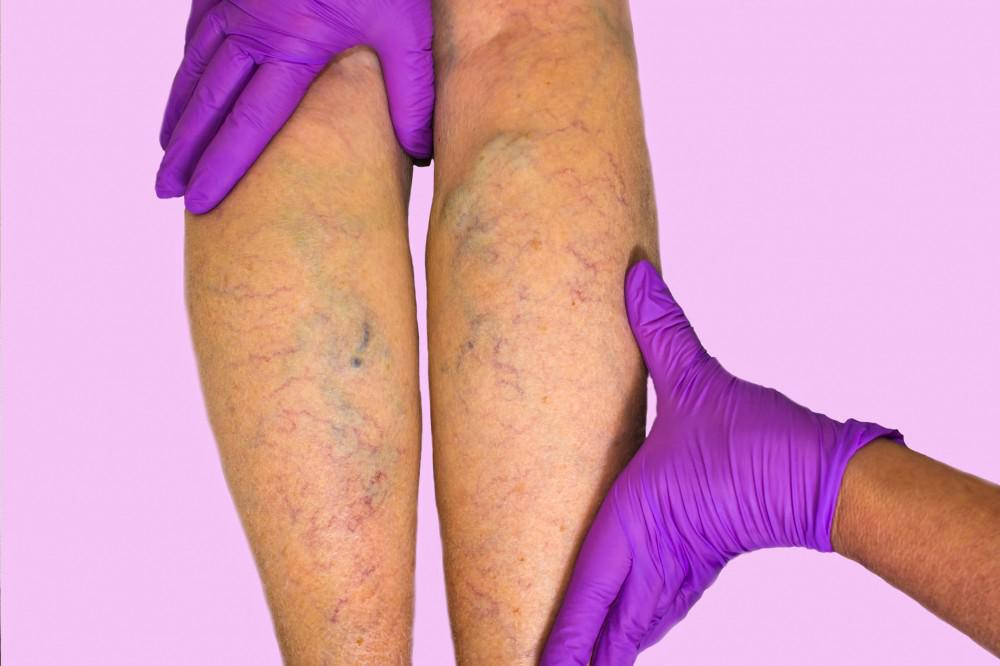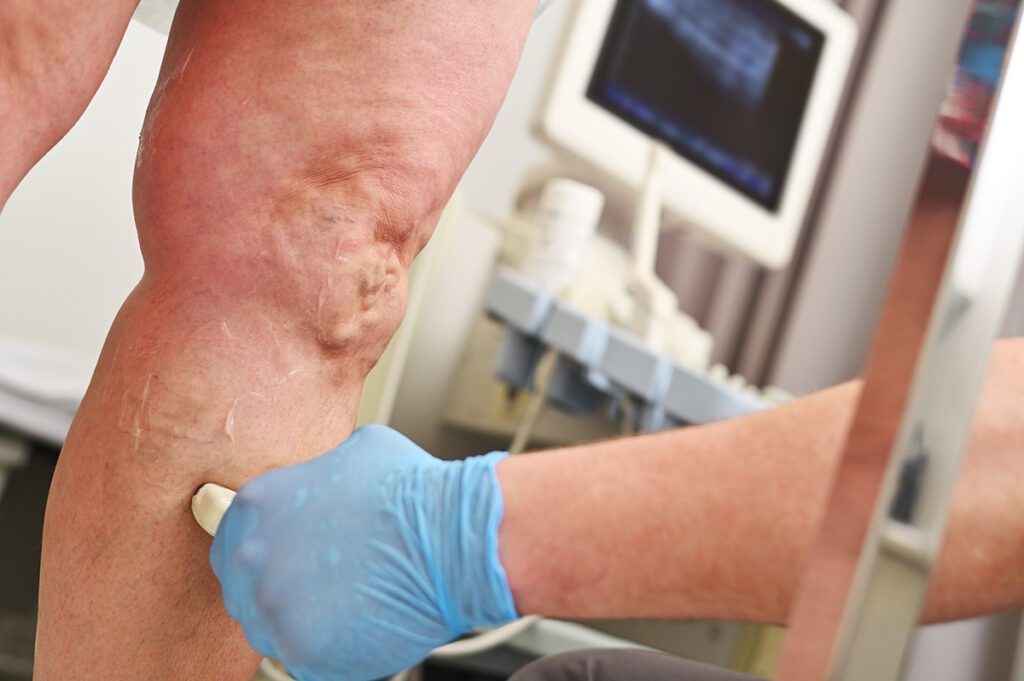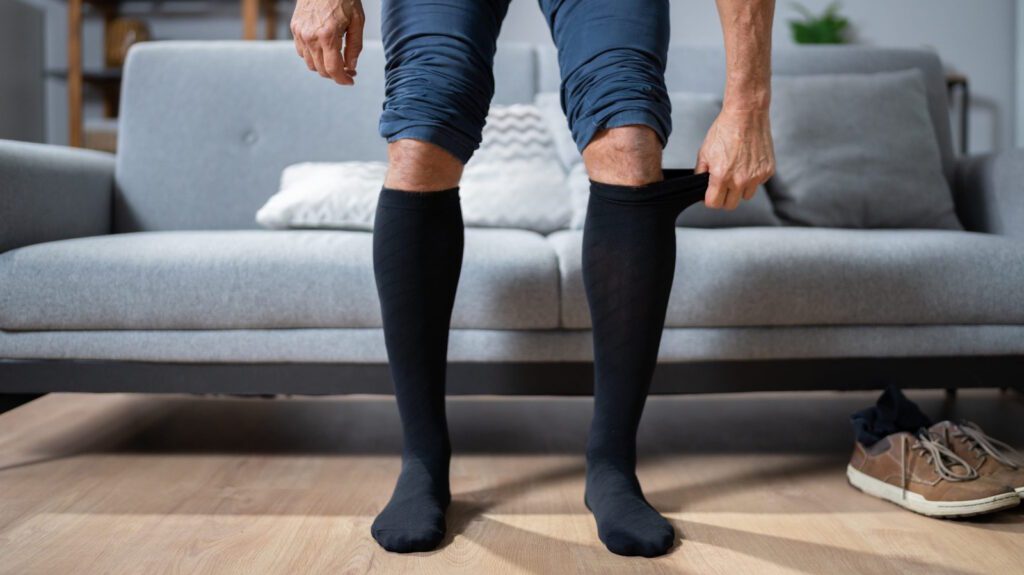What Causes Leg Discoloration?
Author: StrideCare Internal Team

Lisa* always had nice, healthy-looking legs. But over the last year or so, she’s noticed that her skin is turning various shades of red, brown, and yellow. At first, she ignored it and contributed it to a minor allergic reaction—possibly from something she ate or drank. But her leg discoloration is only getting worse, and lately, she’s battled pain and swelling. While Lisa’s situation could still be a skin condition or allergic reaction, the likelihood is even higher that her leg discoloration is vascular-related.
Leg discoloration is a common symptom of vein disease, which impacts an average of one in every three adults over the age of 45 annually. While several treatment options are available, waiting too long to seek a proper diagnosis could lead to more serious complications down the line and a longer recovery process. So, if you are experiencing unexplained leg discoloration, it’s time to see the vein specialists at Stridecare.
Are You Experiencing These Leg Discoloration Symptoms?
- Spider veins
- Reddish or brown staining on lower legs
- Skin that looks yellow, brown, purple, or red
- Pain or swelling of the legs and ankles
- Skin that feels dry, scaly, itchy, flaky, or leathery
- Hair loss on legs and shins
- Skin that’s warm to the touch
- Varicose veins
- Open sores that won’t heal
What’s Causing My Leg Discoloration?
From a lower-extremity vascular standpoint, leg discoloration occurs when your veins can’t sufficiently pump blood back up to the heart like they’re supposed to. We normally don’t think about our veins when they do their job effectively. But it’s easy to see when they aren’t working: the lack of being able to pump blood causes that blood to pool in your lower extremities (lower legs, calves, ankles and feet).
As a result of this pooling effect and blood build-up, the swelling produces pressure and prevents adequate blood and oxygen from reaching the skin—leading to leg discoloration. According to the Mayo Clinic, there are more than 200,000 cases of leg discoloration, or venous stasis dermatitis, in the U.S. each year. It is usually a precursor to more problematic conditions such as venous ulcers, swelling, and other complications.
Below are just a few additional vein diseases and health conditions that cause leg discoloration:
Varicose veins
Varicose veins are extremely common and affect roughly 25% of men and women in the United States. This is a condition where the veins stop working properly, fill up with blood, and enlarge or swell due to a high volume of fluid buildup. Depending on the severity, leg discoloration can occur.

Venous insufficiency
Venous insufficiency is a condition where broken valves do not hold a seal and cause blood pressure to build-up in the lower legs. This leads to pooling of the blood called venous stasis, leading to swelling and skin changes. Advancing age, family history, prolonged standing, obesity, smoking, sedentary lifestyle, and pregnancy are all considered risk factors.
Deep vein thrombosis
This is where blood clots form in one of the veins deep within your body, causing fluid and blood to become trapped with no ability to escape. As the blood clot blocks blood flow, you may also feel pain, or your leg may swell. Your leg can also change color and present as blue or red. Up to 100,000 people die each year from a deep vein thrombosis.
Diabetes
People with diabetes must keep an extra eye on their legs due to a susceptibility to poor blood circulation. If blood flow is hindered enough, slow-healing sores may develop and cause chronic infections and other health issues. Diabetics may also have leg discoloration.
How Do I Fix Leg Discoloration?
Leg discoloration can be caused by a variety of factors, including allergic reactions to medication or insect bites, a significant injury, bruising, etc. But the one thing all scenarios have in common is that they typically improve quickly with the right care program and over-the-counter medications. Conversely, leg discoloration caused by insufficient blood flow and vein disease does not go away quickly—though it can be done with the right treatment methods.
If you’ve been told that your leg discoloration symptoms are vascular-related, there are a few things you can do now:

- Wear compression socks — Compression socks apply gentle pressure to improve circulation, reduce swelling, and help support painful legs during long work shifts, plane flights, and standing on your feet for a long time. By doing this and improving blood flow, you should see leg discoloration improve.
- Lose weight — Excess weight creates added strain on the body, especially in leg veins where there can be a gradual increase in fluid retention, leg swelling, varicose veins, and dermatitis. When your veins can’t hold the extra blood and fluid, surrounding tissues suffer and lead to leg discoloration.
- Eat healthy — A better diet (fruits, vegetables, foods high in Vitamin C and E, and fiber-rich foods) promotes blood circulation and improves cardiovascular health.
- Exercise — Exercising regularly helps improve blood flow throughout the body, builds strong muscles and joints, and simply promotes a healthier lifestyle. For adults, the American Heart Association recommends at least 150 minutes per week of moderate-intensity aerobic activity and increasing the amount and intensity gradually.
- Quit smoking — Smoking, in general, is not good for you and is the leading cause of preventable disease and death in the United States, per the Centers for Disease Control and Prevention. This includes its direct impact on the formation of varicose veins and other venous diseases and complications.
- Avoid long periods of immobility — When you aren’t moving around as much, either because you are bedridden or simply have a job that forces you to sit for long periods of time, blood flow to and from your extremities can be impacted. In fact, a sedentary lifestyle is one of the main culprits of poor blood circulation.

If these methods don’t work, and/or your leg discoloration situation is more serious, your vascular doctor can recommend highly successful procedures such as sclerotherapy, radiofrequency ablation, or microfoam ablation. These and other treatment options are minimally invasive and can get you back to living a symptom-free life while at the same time being able to enjoy how your legs look and feel.
StrideCare Can Help With Leg Discoloration
Leg discoloration is not something anyone should take lightly or put off seeking treatment for. Even if the condition doesn’t appear to be too severe, see a vascular specialist to check if this is a vein issue. If you experience any changes in the look, feel, and condition of your legs, please do not hesitate to visit a trained professional. These and other conditions can get worse and lead to more complicated issues.
The good news is our team of specialists at StrideCare are on the cutting-edge of medicine, helping patients avoid traditionally long invasive surgeries used in the past to treat vascular disease. Technology has advanced to the point where treatments are considered to be “walk-in, walk-out procedures” in most cases and reoccurrence rates are incredibly low. Patients suffering from a multitude of vascular conditions that include venous insufficiency, varicose veins, spider veins, diabetic vascular disease, venous ulcers, peripheral artery disease, leg discoloration, lymphedema, restless legs syndrome, and more can benefit from these minimally invasive treatments.
Prior to starting any new treatment or questions regarding a medical condition, always seek the advice of your doctor or other qualified health provider. This information is not a substitute for professional medical advice.
StrideCare serves the South Texas area including Houston, San Antonio, Austin, Round Rock, Bastrop, Brushy Creek, Cedar Park, Converse, Georgetown, Hutto, Kyle, Leander, Marble Falls, New Braunfels, Pasadena, Pearland, Pflugerville, San Marcos, Schertz, Houston, Sugar Land, Katy, Webster, Bay City, Clear Lake, Lake Jackson, The Woodlands, Universal City, Spring, Kingwood, Stafford, Conroe, Texas City, Cypress, League City, Bellaire, and more.
*Patient stories are true. Names and/or photos may be changed to protect patient confidentiality.


